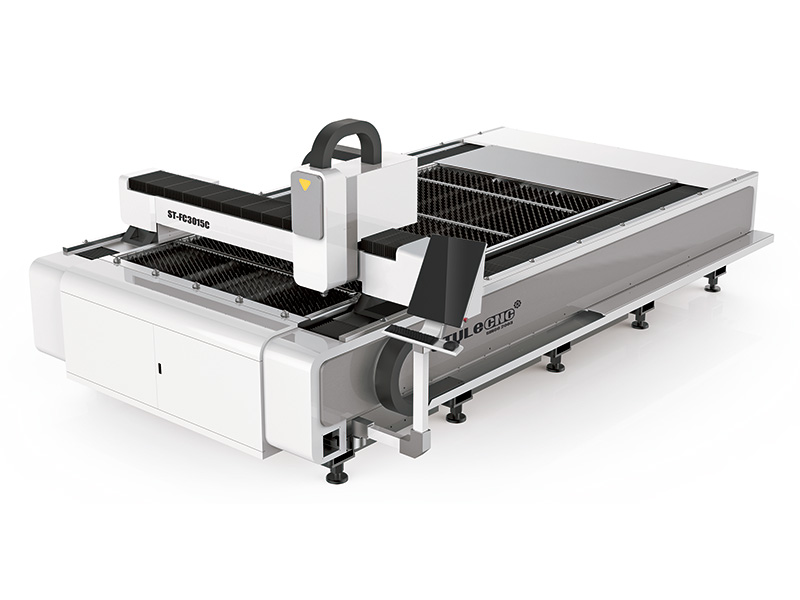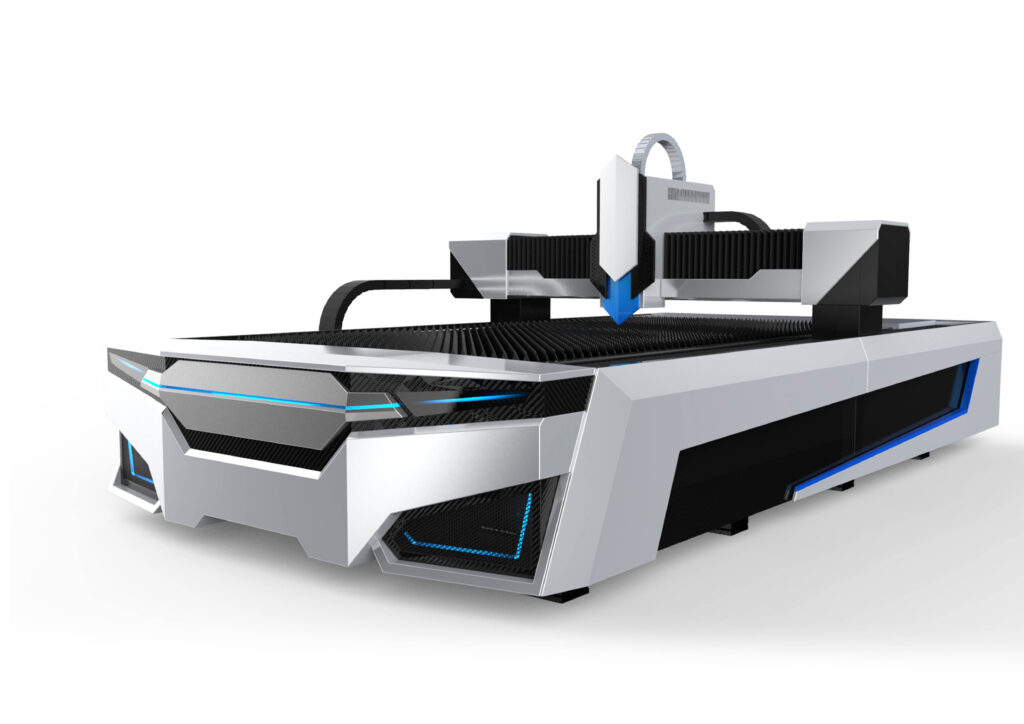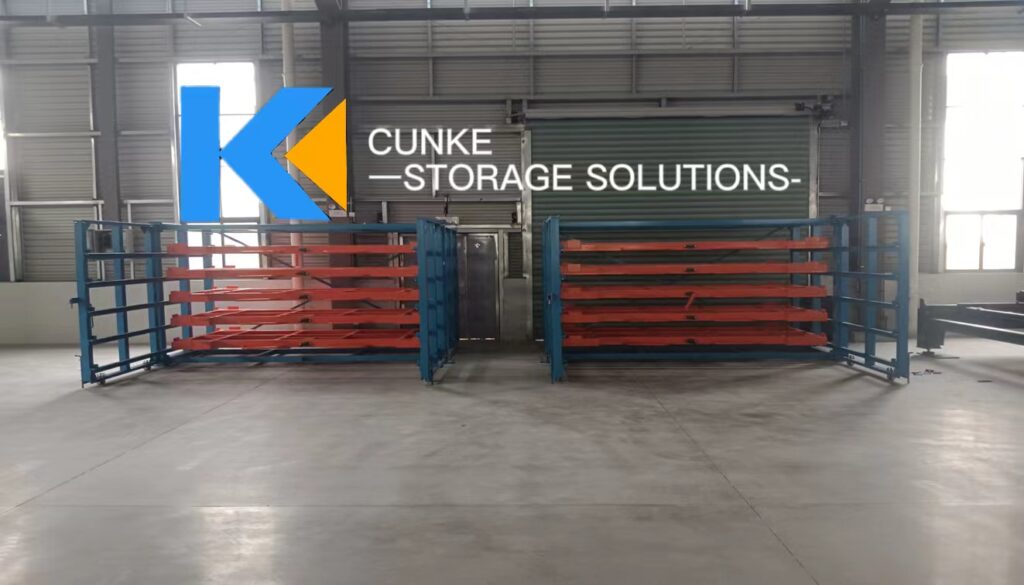The parameters of the laser cutting machine play a vital role in the cutting process, and understanding these parameters is of great significance to ensure the cutting quality, improve the cutting efficiency and optimize the cost. First of all, ensure the cutting quality, laser cutting machine parameters such as laser power, cutting speed, focal length, etc., directly affect the cutting quality. The appropriate laser power and cutting speed can ensure that the cutting surface is smooth and no hanging slag, and the appropriate focal length can obtain a smaller focus diameter and improve the cutting accuracy. It can also improve cutting efficiency: Understanding and optimizing the parameters of the laser cutting machine can significantly improve cutting efficiency. By adjusting parameters such as laser power, cutting speed and auxiliary gas flow, faster cutting speed can be achieved under the premise of ensuring cutting quality, thereby improving production efficiency. At the same time, optimize the cost: the operating cost of the laser cutting machine includes power consumption, auxiliary gas consumption, equipment depreciation, etc. Understanding and reasonably setting the parameters of the laser cutting machine can reduce energy consumption, reduce the use of auxiliary gases, and thus reduce operating costs.
What are the laser cutting parameters
1.laser power
Laser power is one of the important parameters that affect the speed and effect of laser cutting. In general, the greater the laser power, the faster the cutting speed, but it will also increase the heat affected zone, which has a certain impact on the cutting quality. The choice of laser power should be adjusted according to the characteristics of the material such as thickness, hardness and melting point. For example, for thinner materials, lower laser power can be selected. For thicker or harder materials, the laser power needs to be increased to ensure the cutting effect.
2.cutting speed
Cutting speed refers to the linear speed of the laser cutting machine scanning from the surface of the material in a unit time. It is affected by factors such as material properties, laser power and laser beam diameter. Softer materials are easy to cut, while harder materials are difficult to cut. The higher the laser power, the faster the cutting speed. In addition, a laser beam with a smaller focus size requires a higher power density when cutting, so the cutting speed is also faster. However, it should be noted that too high cutting speed may lead to a decline in the quality of the cutting surface, so it is necessary to choose the appropriate cutting speed under the premise of ensuring the cutting quality.
3.pulse frequency
Laser cutting pulse frequency refers to the number of pulses emitted by the laser per second. Pulse frequency has an important effect on cutting quality and efficiency. The lower pulse frequency means that the energy of each pulse is larger, the penetration depth of the laser beam is increased, and the melting area is larger, but the quality of the cutting surface may be reduced. The higher pulse frequency makes the energy of each pulse smaller, the laser beam penetration depth is reduced, and the melting area is smaller, but the cutting surface quality can be improved. Therefore, in practical applications, it is necessary to select the appropriate pulse frequency according to the specific material and cutting requirements.
4.Focal length and focus
Focal length and focus are another important parameters that affect the laser cutting effect. The correct focus position ensures that the laser beam is effectively focused on the surface of the material, thus improving the cutting quality. The choice of focal length is usually adjusted according to the thickness and cutting requirements of the material. The curvature radius and focal length of the focusing mirror will affect the focusing effect of the laser beam. In practical applications, it is necessary to choose the appropriate focal length and focusing Settings according to the performance parameters of the cutting machine and the characteristics of the material.
5.Gas type and flow rate
In the laser cutting process, auxiliary gases are usually used to remove the melt and dust in the cutting area to improve the cutting effect. Different materials need to choose the right gas type and flow rate. For example, for carbon steel materials, oxygen can be used as an auxiliary gas, while for stainless steel materials, nitrogen or argon can be selected. The choice of gas flow also needs to be adjusted according to the thickness of the material and the cutting speed. Too large a gas flow can lead to waste and increased costs, while too small a gas flow may not effectively remove molten matter and dust.
6.Spot diameter
Spot diameter refers to the diameter of the laser beam after focusing on the surface of the material. It directly affects the fineness and flatness of the cutting line. Normally, the smaller the spot diameter, the higher the cutting quality, but it will also increase the cutting time and power consumption. Therefore, when selecting the spot diameter, it is necessary to weigh the cutting time and power consumption under the premise of ensuring the cutting quality.
7.Cool down
Cooling is an important laser parameter because the laser head generates heat during operation. Proper cooling allows the laser optics to be kept at a more ideal temperature throughout their operation. This not only improves the quality of the workpiece, but also extends the functional life of the laser system.

What are the effects of the parameters on laser cutting
1 Cooling:
Laser cutting process will generate a lot of heat, if there is no effective cooling system, the laser and cutting head will overheat, affecting its performance and shorten the life of the equipment. Cooling systems usually include water cooling and wind cooling in two ways. Water cooling system uses circulating water to carry away heat, the effect is better, suitable for high power laser cutting machine. The wind cooling system is suitable for low power laser cutting machines. Effective cooling can not only maintain the temperature of the equipment, but also maintain the stability of the cutting quality, avoiding the uneven cutting and equipment damage caused by overheating.
2.Spot diameter:
Spot diameter affects the focusing effect and cutting quality of the laser beam. The smaller spot diameter can provide higher cutting accuracy and smoother edges, suitable for applications requiring precision machining, such as microelectronics and precision machinery manufacturing. However, a smaller spot also means that energy is concentrated in a smaller area and the cutting speed may be reduced. The larger spot diameter is suitable for cutting thicker materials, which can improve the cutting speed, but may lead to rough edges and reduced cutting accuracy. Therefore, it is very important to adjust the spot diameter according to the specific cutting needs.
3.Gas type and flow rate:
Auxiliary gas plays a role in removing slag, cooling the cutting area and preventing oxidation in laser cutting. Common gases include oxygen, nitrogen and air. When cutting carbon steel, oxygen can promote the combustion process and improve the cutting speed, but it will form an oxide layer on the cutting surface and require post-treatment. Nitrogen is suitable for materials such as stainless steel and aluminum to prevent oxidation and keep cutting edges clean. Air, although cheap, contains impurities that may affect the quality of the cut. Control of gas flow is also very important, too large or too small flow will affect the cutting effect, need to be adjusted according to the material and cutting thickness.
4.Focal length and focus:
Focal length is the distance from the focus of the laser beam to the lens, and the correct focal length setting can make the laser beam form a minimum spot on the surface of the material to ensure the highest energy density and cutting efficiency. The choice of focal length needs to be adjusted according to the thickness and cutting requirements of the material. A shorter focal length is suitable for high-precision cutting of thin materials, while a longer focal length is suitable for cutting of thick materials. Precise control of the focus position avoids laser beam defocusing and ensures smooth cutting surfaces and neat cuts.
5· Pulse frequency:
Pulse frequency refers to the number of pulses emitted by the laser in unit time. The high pulse frequency is suitable for fine cutting that requires a continuous and stable energy output, such as the cutting of thin materials and complex graphics. Low pulse frequency can provide a stronger energy pulse, suitable for cutting thicker materials, improve cutting depth and speed. Adjusting the pulse frequency optimizes energy transfer to ensure the best cutting results for different materials and thicknesses.
6.Cutting speed:
Cutting speed directly affects production efficiency and cutting quality. Proper cutting speed can improve efficiency while maintaining quality. Too fast cutting speed may cause the laser beam can not completely penetrate the material, cutting is not complete; Too slow a speed may lead to excessive heating of the material and rough cutting edges. The cutting speed can be adjusted according to the material characteristics, thickness and laser power to achieve the best cutting results.
7.Laser power:
Laser power determines the energy intensity of the laser beam, affecting the cutting speed and cutting thickness. High-power lasers can cut thicker materials quickly, but increase the heat-affected zone, potentially leading to reduced cutting edge quality. Low power lasers are suitable for fine cutting and can provide high cutting quality and detail processing capability. Adjusting the laser power according to the specific cutting needs can balance the cutting speed and quality to achieve the best cutting results.
Laser cutting machine selection guide
In order to choose the right laser cutting machine, you need to consider the cooling system, spot diameter, gas type and flow rate, focal length and focus, pulse frequency, cutting speed, laser power and other parameters. The following are specific selection guidelines and examples:
- Cooling system
- High power laser cutting machine:
o Requirements: Cutting thick materials or mass production.
o Option: Equipped with water cooling system to effectively dissipate heat and maintain stable operation of the equipment.
o Example: If you need to cut stainless steel plates more than 10 mm thick, choose a 3000W laser cutter with a water cooling system.
- Low power laser cutting machine:
o Requirements: Cutting thin materials or small-scale production.
o Option: Equipped with air cooling system, low cost, suitable for small and medium enterprises.
o Example: If you mainly cut 1-2 mm acrylic sheet, you can choose a 500W air-cooled system laser cutting machine.
- Spot diameter
- High precision cutting:
o Requirements: High precision and smooth edges.
o Selection: Laser cutting machine with small spot diameter.
o Example: Precision machining of electronic components requires high precision, choose a laser cutting machine with a spot diameter of 0.1 mm.
- Thick material cutting:
o Requirements: Fast cutting of thicker materials.
o Selection: Laser cutting machine with large spot diameter.
o Example: When cutting 8 mm carbon steel plate, choose a laser cutting machine with a spot diameter of 0.3 mm.
- Gas type and flow rate
- Cutting carbon steel:
o Requirements: Improve cutting speed.
o Option: Laser cutting machine with oxygen assist system.
o Example: To cut carbon steel tubing quickly, choose a 2000W laser cutter with an oxygen assist system.
- Cutting stainless steel and aluminum:
o Requirements: Prevent oxidation and keep cutting edges clean.
o Option: Laser cutting machine with nitrogen auxiliary system.
o Example: For the production of stainless steel kitchenware, which requires high-quality cutting edges, choose a 1500W laser cutting machine with nitrogen auxiliary system.
- Universal cutting:
o Requirements: low-cost solutions.
o Option: Air assisted laser cutting machine.
o Example: For a small craft studio, choose a 500W air-assisted laser cutter.
- Focal length and focus
- High precision cutting of thin materials:
o Requirements: High precision and smooth surface.
o Selection: Laser cutting machine with short focal length.
o Example: Precision electronic component cutting, choose a laser cutting machine with a focal length of 50 mm.
- Thick material cutting:
o Requirement: Deep cutting effect.
o Selection: Laser cutting machine with long focal length.
o Example: For cutting steel plates 20 mm thick, choose a laser cutter with a focal length of 125 mm.
- Pulse frequency
- Fine cutting:
o Requirements: Continuous and stable energy output.
o Select: Laser cutting machine with high pulse frequency.
o Example: For cutting thin metal sheets, such as 0.5 mm stainless steel, choose a laser cutter with a pulse frequency of 20kHz.
- Thick material cutting:
o Requirements: Provide a stronger energy pulse.
o Select: Low pulse frequency laser cutting machine.
o Example: Cutting 15 mm aluminum sheet, choose a laser cutting machine with a pulse frequency of 5kHz.
- Cutting speed
- Efficient production:
o Demand: Improve production efficiency.
o Selection: Laser cutting machine with fast cutting speed.
o Example: For mass production of stainless steel tubes, choose a laser cutting machine with a cutting speed of 40 m/min.
- Quality first:
o Demand: High quality cutting.
o Selection: Laser cutting machine with adjustable cutting speed.
o Example: For high-quality furniture production, choose a laser cutting machine with an adjustable cutting speed of 20 m/min.
- Laser power
- Thick material and high speed cutting:
o Requirements: Fast cutting of thick materials.
o Selection: High power laser cutting machine (such as 1000W or more).
Example: The construction industry needs to cut 20 mm thick steel plate, choose a 3000W laser cutting machine.
- Fine and thin material cutting:
o Requirements: High quality and fine cutting.
o Selection: Low power laser cutting machine (such as less than 500W).
o Example: To make precision instruments, choose a 500W laser cutting machine.
Comprehensive selection case
Suppose you need a laser cutting machine that can cut from 1mm thick acrylic to 10mm thick stainless steel, and both high precision and high efficiency are required in the production process. Based on the above parameters, you can choose the following configuration:
- Cooling system: Water cooling system to ensure long time and high power operation.
- Spot diameter: Adjustable spot diameter to adapt to different materials and accuracy requirements.
- Gas system: Oxygen and nitrogen dual gas system, according to different materials to choose suitable gas.
- Focal length: Adjustable focal length, adapt to different material thickness.
- Pulse frequency: high and low frequency adjustable to meet different cutting needs.
- Cutting speed: Adjustable speed to ensure a balance between efficiency and quality.
- Laser power: medium and high power (such as 1500W), suitable for cutting needs of a variety of materials and thicknesses.

So after introducing these parameters, I think you should know how to choose your favorite laser cutting machine. Then another encountered sheet metal storage above I will introduce our company’s products. Roll Out Sheet Metal Rack. CK Roll Out Sheet Metal Racks maximize space and efficiency while ensuring safety, freeing up floor space for better use. Featuring easily accessible roll-out drawers, these racks are ideal for overhead crane use and perfectly complement metal processing equipment like lasers and press brakes. Engineered for industrial efficiency, the Roll Out Sheet Metal Rack boasts a capacity of up to 5000kg (11000 lbs) per level and integrates a removable mechanical crank, revolutionizing the ease of accessing stored materials. Each drawer can be smoothly extended, offering hassle-free loading and unloading of heavy items. Constructed with high-quality materials, the racks ensure long-term durability and safety in demanding industrial environments, enhancing operational efficiency and maintaining a safe, organized workspace.

